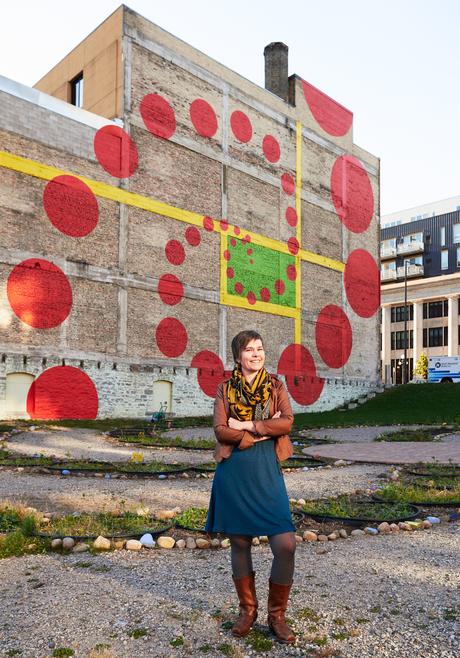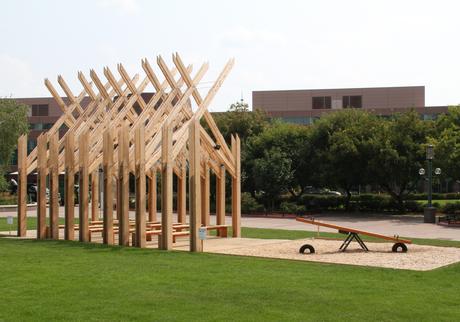
As Public Art Saint Paul’s artist-in-residence, Amanda Lovelee helmed a team of collaborators to create Urban Flower Field, which draws attention to ecology in the city’s Pedro Park. Along with Lovelee, the project’s creative team included Adam Kay, Director of Environmental Science, University of St. Thomas; muralists Ed Charbonneau and Jeremy Szopinski; Don Ganje and Bianca Paz of Saint Paul Parks and Recreation; and agroecologist Paula Westmoreland of Ecological Design.
Photo by David Bowman.While working her “dream job” as an artist-in-residence for Public Art Saint Paul in Minnesota, Amanda Lovelee has seized her chance to pursue civic-minded projects that use the city as a canvas. Urban Flower Field, a statement on inner-city agriculture, entailed reworking the previously vacant Pedro Park into a sloping garden featuring 96 biodiverse flower beds and a vibrant mural.
Despite the serious nature of her central theme—the need for spaces that encourage human contact—Lovelee is unafraid to imbue her art with a sense of fun: “If an artist can’t make the civic process joyful, playful, and remind people why they love the city they live in, then who can?”

Balancing Ground, seen here, is a structure that encourages collaboration with its inviting sense of play: the teeter-tooter triggers audio clips that tend to sneak up on those in the adjacent pavilion.
Image courtesy of Amanda Lovelee.A scientist’s thirst for experimentation also colors Lovelee’s work, including a recent collaboration with Kyle Waites, Sarah West, and Christopher Field entitled Balancing Ground. The team set up a wooden structure in downtown Minneapolis containing rows of benches and an oversize teeter-totter that triggered audio clips with its up-and-down motion. Featuring the voices of Lovelee’s wide-ranging collaborators—from a horticulturist to a local professor—the audio promotes audience reflection and teamwork. Using this collective model, Lovelee and her team “can do projects that none of us could’ve done on our own,” she says. “I’m thinking about different ways to access people’s potential and have all of their voices at the table.” amandalovelee.com
- Log in or register to post comments
